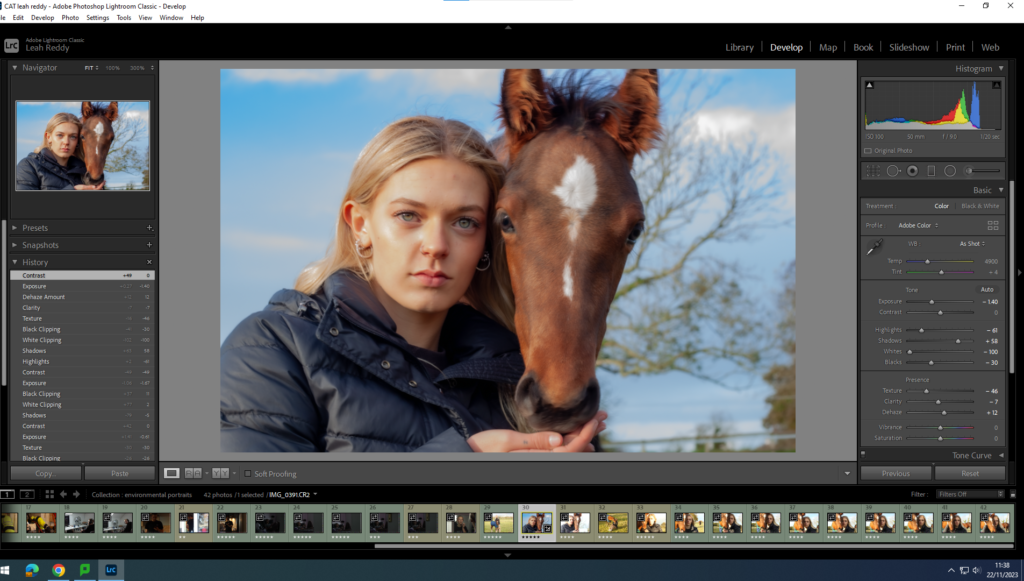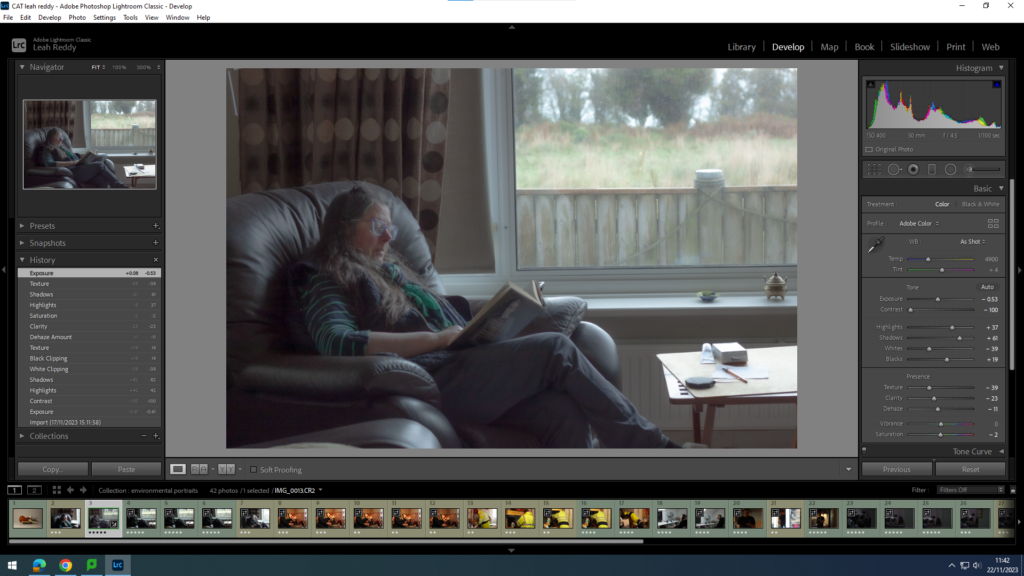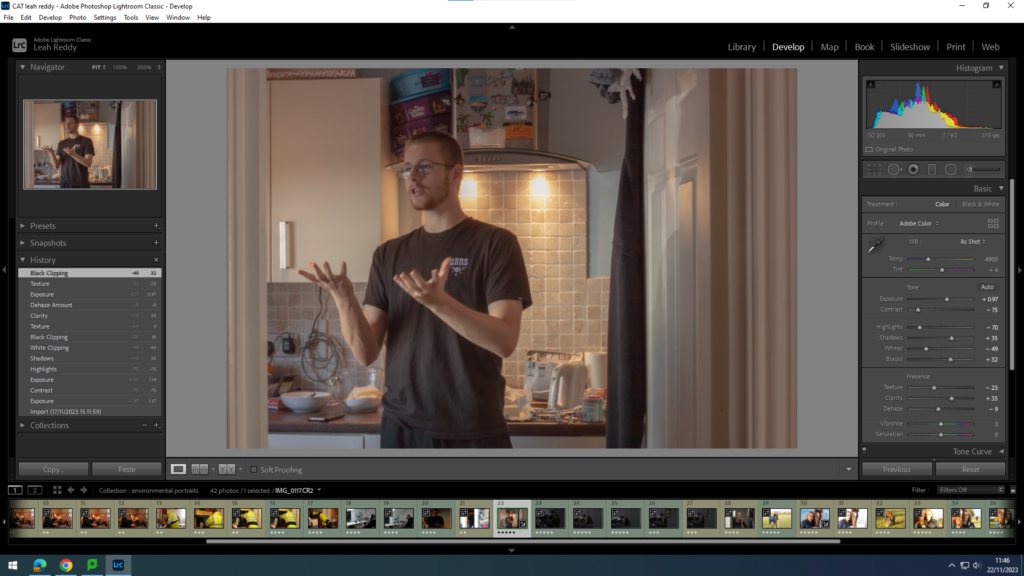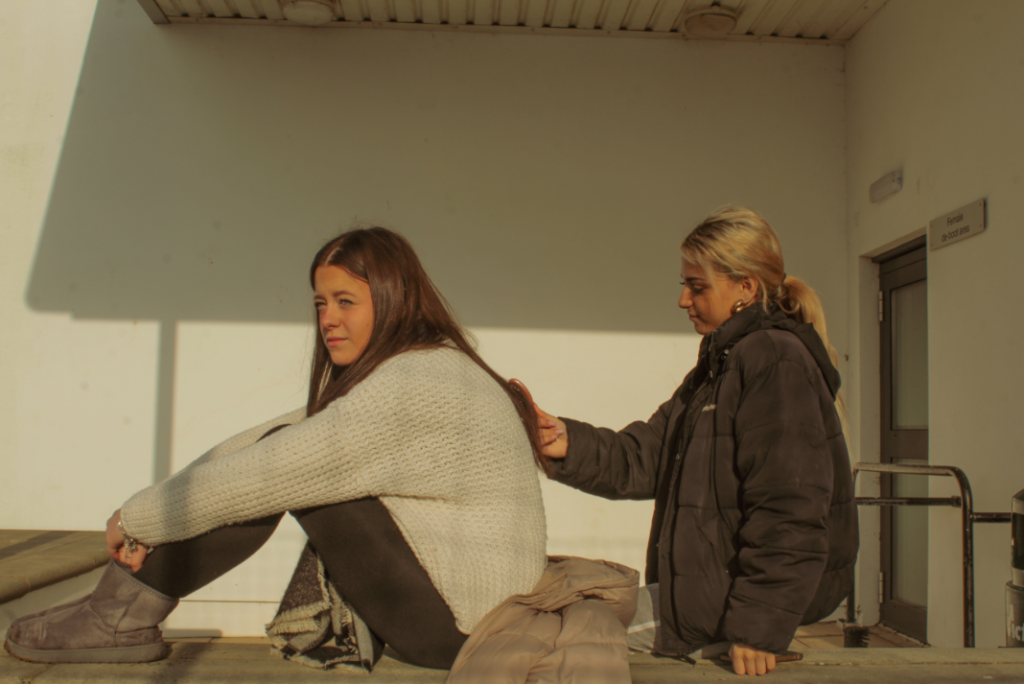Environmental Portraits
An environmental portrait is a portrait executed in the subject’s usual environment, such as in their home or workplace, and typically illuminates the subject’s life and surroundings. The term is most frequently used as a genre of photography.
It is a shot that captures a subject at work, at home, or in another important location. Good environmental portraits will tell strong stories of their subjects. Their immediate surroundings will give the viewer insight into where these people are, what they do, and who they are.



This photography task included looking at the themes of identity in a way. The project focused on people, and what they do for a living/in their natural environment. I used a documentary approach, using pictures with people involved in real events to provide a factual report on a particular subject. Arnold Newman was an artist reference in my work. Newman is often known well by being the photographer who articulated and who consistently employed the genre of environmental portraiture; a well known example being his portrait of Igor. Newman began his career in photography in 1938 working at chain portrait studios in Philadelphia, and immediately began working in abstract and documentary photography on his own. To edit my photos, I used Lightroom, making my pictures way more sustainable. I also learnt new ways of photographical skills, including different settings on the camera to fit the environment.
Femininity and Masculinity
I focused on femininity.
Justine Kurland images


Cindy Sherman Images


This photography task included looking at the themes of femininity and masculinity in a way. The project focused on in general, being “feminine”; often encompasses qualities and behaviours that are traditionally associated with women, such as nurturing, empathy, grace, and gentleness. However, it’s important to remember that these traits are not inherently tied to gender, and people of any gender can express these qualities. And masculinity; involving a display of attitudes and behaviours that signify and validate maleness, and involves being recognised in particular ways by other men and women. Masculinity is constructed and defined socially, historically and politically, rather than being biologically driven. I used a documentary approach, using pictures with people involved in real events to provide a factual report on a particular subject. Cindy Sherman is an American photographer, born 19th January 1954, New Jersey, United States. Her work consists primarily of photos which depict herself in many different contexts and as various different imagined characters. Sherman usually inserts herself into a dialogue about stereotypical portrayals of women in her photographs, which resemble scenes from 1950s and 1960s films. Her art plays on the feminist idea that gender arises exclusively within culture and deconstructs dominant gender ideologies, representing the underside of popular culture’s definition of “woman.” To edit my photos, I used photoshop, experimenting with my pictures and their filters. I also learnt new ways of editorial skills, including different factors on the app to make the pictures look interesting and eye catching.
The New Topographics
New Topographics was a term coined by William Jenkins in 1975 to describe a group of American photographers (such as Robert Adams and Lewis Baltz) whose pictures had a similar banal aesthetic, in that they were formal, mostly black and white prints of the urban landscape. Unlike their predecessors, these new “topographic” photographers (such as Robert Adams) were less concerned with portraying an ideal image of nature and were more interested in showing plainly how man has altered it.

Robert Adams is an American photographer best known for his images of the American West. Offering solemn meditations on the landscapes of California, Colorado, and Oregon, Adams’s black-and-white photos document the changes wrought by humans upon nature. While Adams was teaching English at Colorado College, he began taking pictures of nature and architecture with a 35 mm reflex camera, and learned photographic technique from the professional photographer Myron Wood. His earliest series The New West (1968–1971) depicts the uniform housing tracts that were part of suburban development in Colorado.
